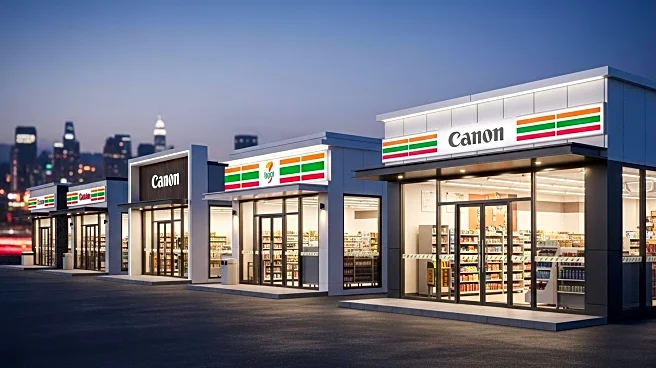What's Happening?
Bimba y Lola, a fashion retailer, has reported a 7% increase in revenue for the first half of the year. This growth is primarily attributed to the performance of its physical retail stores, which account for 80% of the company's total sales and experienced a 6% increase. Additionally, the company's online sales have shown positive momentum, with a 12% increase, although this marks a slight slowdown from the 15% growth recorded at the end of 2024. In response to these trends, Bimba y Lola has expanded its online store to become a global platform, now accessible in nearly every country.
Why It's Important?
The revenue growth of Bimba y Lola highlights the ongoing importance of physical retail stores in the fashion industry, even as online sales continue to grow. The company's ability to expand its online presence globally suggests a strategic move to capture a broader market and adapt to changing consumer behaviors. This development is significant for stakeholders in the fashion industry, as it underscores the need for a balanced approach between physical and digital retail strategies. The increase in revenue also indicates a positive consumer response to Bimba y Lola's offerings, which could influence market dynamics and competitive strategies among fashion retailers.
What's Next?
Bimba y Lola's expansion of its online platform to a global audience suggests that the company will continue to focus on enhancing its digital presence. This move could lead to further growth in online sales, potentially offsetting any future slowdowns in physical store performance. The company's strategy may prompt other fashion retailers to reevaluate their own digital and physical retail strategies to remain competitive. Additionally, Bimba y Lola's performance could attract attention from investors and industry analysts, potentially influencing future investment and market trends in the fashion sector.
Beyond the Headlines
The expansion of Bimba y Lola's online platform to a global scale raises questions about the logistical and operational challenges of managing a worldwide digital presence. This move may require significant investment in technology and infrastructure to ensure a seamless shopping experience for customers across different regions. Furthermore, the company's ability to maintain brand consistency and customer service standards globally will be crucial to its success. The shift towards a more digital-focused strategy also highlights the broader trend of digital transformation in the retail industry, which could have long-term implications for employment, supply chain management, and consumer engagement.










